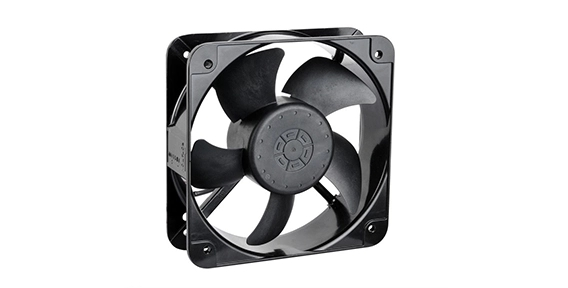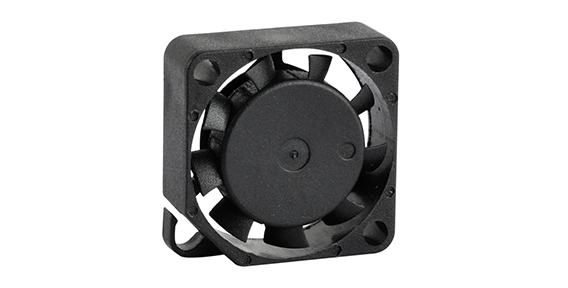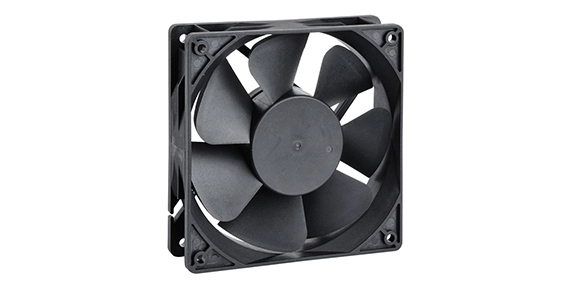Efficient temperature management in electronic systems often requires precise control over airflow, especially in applications where variable cooling is essential. DC blower fans, known for their versatility, take center stage in providing effective speed control and regulation. This exploration delves into the mechanisms and benefits of speed control in DC blower fans, highlighting their advantages over traditional axial cooling fans.
Dynamics of Speed Control in DC Blower Fans
DC blower fans are distinguished by their ability to operate at variable speeds, allowing for dynamic control over airflow. The speed control mechanism in these fans is typically facilitated by pulse-width modulation (PWM) or voltage regulation. This level of control is invaluable in applications where cooling requirements fluctuate, enabling precise adjustments to match the thermal demands of electronic components.
While axial cooling fans are commonly used in various applications, their fixed-speed operation can be a limitation when dealing with dynamic temperature conditions. The adaptability of DC blower fans to varying cooling needs positions them as a superior choice in scenarios where temperature regulation is a critical consideration.

DC Blower Fan: Tailoring Airflow to Demand
Pulse-width modulation stands out as a leading method for speed control in DC blower fans. This technique involves modulating the width of the electrical pulses supplied to the fan motor, thereby controlling the fan speed. The flexibility of PWM allows for precise adjustments in fan speed, offering a fine-grained approach to cooling. DC blower fans equipped with PWM technology excel in applications where rapid changes in temperature require swift and accurate adjustments to airflow.
In comparison, axial cooling fans, with their fixed-speed operation, may struggle to match the responsiveness of DC blower fans when faced with fluctuating thermal conditions. The ability to tailor airflow to the specific demands of electronic systems makes DC blower fans an ideal choice for applications where temperature regulation is paramount.

DC Blower Fan: Customizing Cooling Solutions
Another method employed for speed control in DC blower fans is voltage regulation. By adjusting the voltage supplied to the fan motor, users can customize the speed of the fan to meet specific cooling requirements. This level of customization is particularly beneficial in applications where a predetermined and consistent fan speed is desired for extended periods.
The axial cooling fan, operating at a fixed speed, may not offer the same level of customization as DC blower fans with voltage regulation. In scenarios where a constant and controlled airflow is essential, the ability to fine-tune fan speed through voltage regulation positions DC blower fans as a superior choice for achieving the desired cooling balance.
Advantages of Speed Control in DC Blower Fans
The incorporation of speed control mechanisms in DC blower fans offers several advantages in electronic cooling applications. One notable benefit is energy efficiency. The ability to adjust fan speed based on actual cooling needs ensures that the fan operates at optimal levels, minimizing energy consumption. This efficiency is crucial in environments where power consumption is a key consideration.
Additionally, speed control contributes to noise reduction. DC blower fans can operate at lower speeds when cooling demands are lower, resulting in reduced noise levels. In contrast, traditional axial cooling fans, operating at a fixed speed, may produce constant noise levels regardless of the actual cooling requirements.
When considering the deployment of DC blower fans with speed control, various factors come into play. The nature of the application, the fluctuation in thermal conditions, and the desired balance between energy efficiency and cooling performance all influence the choice of speed control mechanisms. DC blower fans, with their adaptability and customization options, prove advantageous in applications ranging from server cooling to industrial machinery.
In conclusion, speed control and regulation in DC blower fans represent a technological leap in the realm of electronic cooling. The ability to dynamically adjust airflow to match the specific thermal demands of electronic components sets DC blower fans apart from traditional axial cooling fans. As technology continues to advance, the precision and adaptability offered by speed control mechanisms position DC blower fans as a pivotal component in achieving efficient and responsive cooling solutions in diverse applications.

 EN
EN 

 +
+
 +
+
 +
+



